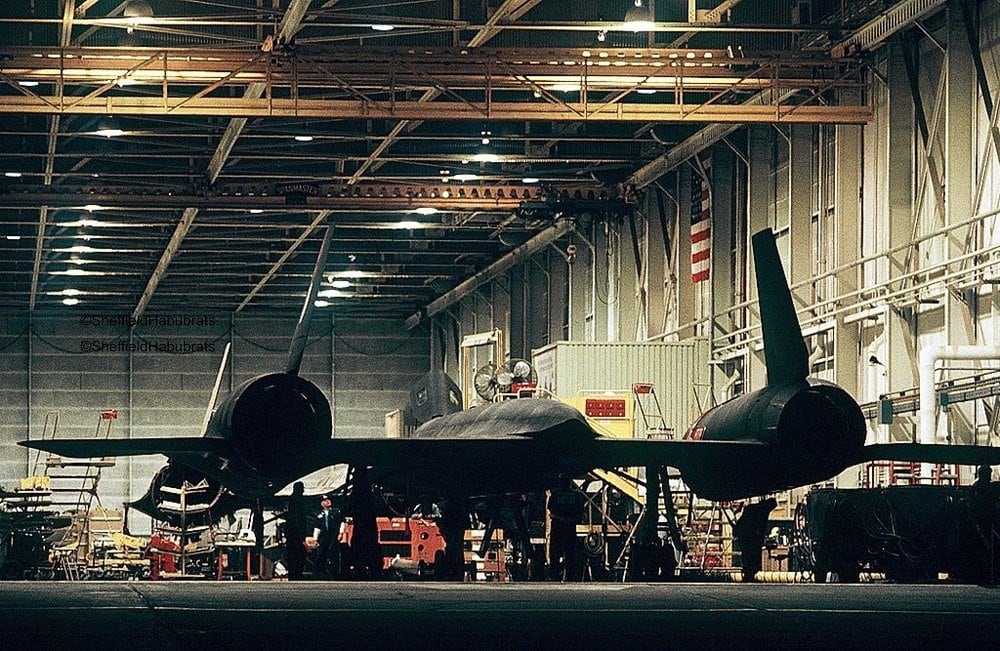No other U.S. Air Force aircraft could fly faster or higher than the Lockheed SR-71 “Blackbird,” and on its final flight, it set a truly impressive record.
The reconnaissance aircraft flew from the west coast of the United States to the east coast – some 2,404 miles – in just 68:17 minutes. During that flight, it traveled from St. Louis, Missouri, and Cincinnati, Ohio, a distance of 311 miles in about eight and a half minutes.
While no Blackbirds were ever flown over Soviet airspace (well, that we know of), the SR-71 played a crucial role in the Cold War and took part in missions over the Middle East, Vietnam, and even North Korea.
It could cross continents in just a few hours, and at 80,000 feet, the Blackbird could survey 100,000 square miles of the ground below per hour. In July 1976, an SR-71 even set two world records – one was an absolute speed record of 2,193.167 mph while the other was an absolute altitude record of 85,068.997 feet. It carried no weapons and speed was its only defense.

SR-71 Blackbird in a hanger. Image: Creative Commons.
She Was Expensive to Fly
But one thing the SR-71 couldn’t outrun was the costs to maintain it.
Everything about the aircraft was expensive.
The CIA had to smuggle out Soviet titanium, the best produced at the time, for the aircraft’s skin and landing gear, while special aluminum-reinforced tires were developed by BF Goodrich specifically for the Blackbird. The life span of those tires was only about twenty landings.
Estimates were that the aircraft cost around $200,000 an hour to operate, and while more capable than the Lockheed U-2, the costs were seen as a significant problem. In 1989 the Blackbird was retired – and many SR-71s were sent to museums, while a few were kept in reserve.
SR-71, Rebooted
That could have been the end of the story, but in the early 1990s, the SR-71 program was reactivated – in part because a successor had yet to be developed (But the SR-72 might be around the corner). The aircraft was part of a contentious political debate that pitted members of Congress against the Pentagon over America’s intelligence policy, where supporters in Congress questioned the Department of Defense’s (DoD’s) refusal to use the aircraft over Bosnia and other global hotspots of the era.

The Air Force argued the old warbird wasn’t integrated with the rest of its modern equipment, and that its cameras took still photos that couldn’t be relayed by video to the ground. Instead, the CIA and DoD relied on drones to provide an eye-in-the-sky, along with satellites. Supporters of the SR-71 countered that drones could be (and were) shot down, while foreign militaries could determine when satellites were due to fly overhead.
The SR-71 made its return, in part because the argument was made that the planes were already bought and paid for – while there were a lot of spare parts. Lockheed Martin’s “Skunk Works” – which had developed the aircraft – was able to bring the Blackbird out of retirement under a budget of $72 million.

However, the reactivation was met with more resistance than the plane had faced from America’s adversaries. It was simply something that Air Force leaders didn’t want and required money to be shifted from other programs. The issue was so contentious that when Congress reauthorized funding, the U.S. Supreme Court heard the case and ruled that President Bill Clinton’s attempted line-item veto to cancel the funding was unconstitutional.
In 1998, the program was finally permanently retired, but NASA was able to operate the final two airworthy Blackbirds until 1999. It was an inauspicious end to an aircraft that could do what no other reconnaissance plane could do. While no SR-71 was ever shot down, it was the political infighting and an issue of funding that finally grounded the speedy Blackbird.





